Human evolution expert Professor Chris Stringer has studied Neanderthals his entire career. Here, he tells us what scientists have uncovered about the lifestyle of these early humans, their distinctive characteristics and what they were like.
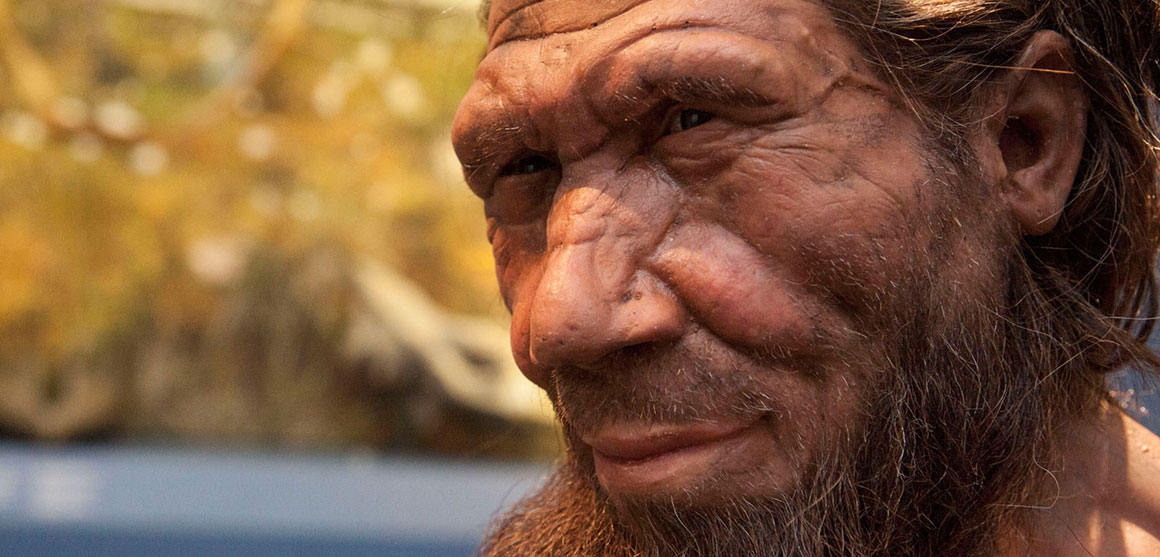
The face of a lifelike Neanderthal model created for the Natural History Museum by Dutch artists, the Kennis brothers. The scientifically accurate model is based on 40,000-year-old Homo neanderthalensis remains found in Belgium.
We know more facts about Neanderthals than any other extinct humans. Many thousands of their artefacts and fossils have been found, including several nearly complete skeletons.
We also know about their genetic make-up, as several Neanderthal genomes have now been reconstructed from ancient DNA obtained from their fossils.
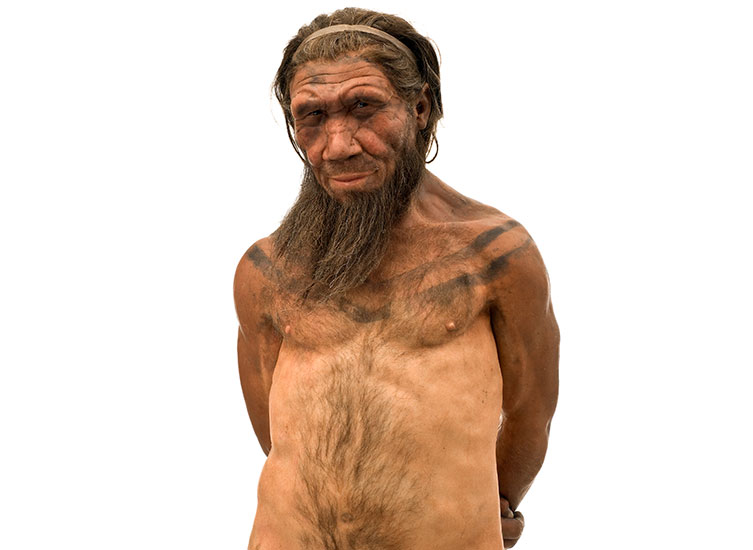
Neanderthal facts
- Species: Homo neanderthalensis
- Lived: from about 400,000 to 40,000 years ago
- Where: across Europe and southwest and central Asia
- Appearance: large nose, strong double-arched brow ridge, relatively short and stocky bodies
- Brain size: at least 1,200cm3 to 1,750cm3
- Height: about 1.50-1.75m
- Weight: about 64-82kg
- Diet: meat, plants and fungi, shellfish when available
- Species named in: 1864
- Name meaning: 'human from the Neander Valley'
Our closest ancient human relatives
Neanderthals were humans like us, but they were a distinct species called Homo neanderthalensis.
Together with an Asian people known as Denisovans, Neanderthals are our closest ancient human relatives. Scientific evidence suggests our two species shared a common ancestor.
Current evidence from both fossils and DNA suggests that Neanderthal and modern human lineages separated at least 500,000 years ago. Some genetic calibrations place their divergence at about 650,000 years ago.
Both dating issues and fossil anatomy mean that scientists are currently uncertain whether the last common ancestor of Neanderthals and modern humans was Homo heidelbergensis, Homo antecessor or another species.
Neanderthals lived alongside early modern humans for at least part of their existence. We now know that some encounters were very intimate - some of us have inherited around 2% Neanderthal DNA.
When did Neanderthals live?
The Neanderthals have a long evolutionary history. The earliest known examples of Neanderthal-like fossils are around 430,000 years old. The best-known Neanderthals lived between about 130,000 and 40,000 years ago, after which all physical evidence of them vanishes.
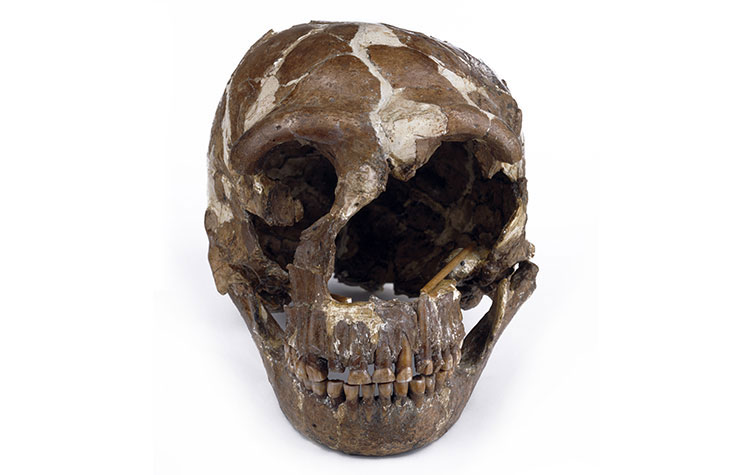
Female Homo neanderthalensis skull discovered at Tabun Cave at Mount Carmel in Israel. Known as Tabun 1, this Neanderthal specimen is around 130,000 years old.
Where did Neanderthals live?
Neanderthals evolved in Europe and Asia while modern humans - our species, Homo sapiens - were evolving in Africa.
Judging from fossil evidence from Sima de los Huesos in northern Spain and Swanscombe in Kent, the Neanderthal lineage was already well-established in Europe by 400,000 years ago.
The species ranged widely in Eurasia, from Portugal and Wales in the west across to the Altai Mountains of Siberia in the east.
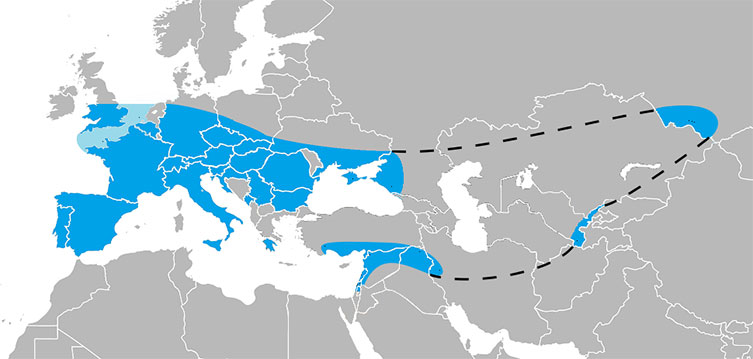
Map showing the known range of Neanderthals. Image © I Ryulong via Wikimedia Commons, licensed under CC BY-SA-3.0
Neanderthal populations were adaptable, living in cold steppe environments in England and Siberia about 60,000 years ago, and in warm temperate woodlands in Spain and Italy about 120,000 years ago.
What did Neanderthals look like?
Neanderthals had a long, low skull (compared to the more globular skull of modern humans) with a characteristic prominent brow ridge above their eyes.
Their face was also distinctive. The central part of the face protruded forward and was dominated by a very big, wide nose. Some scientists think this feature may have been an adaptation to living in colder, drier environments. The large internal volume of the nose would have acted to moisten and warm the air they breathed.
Their front teeth were large, and scratch-marks show they were regularly used like a third hand when preparing food and other materials. Unlike modern humans, Neanderthals didn't have much of a chin.

Side views of an approximately 50,000-year-old Neanderthal skull from La Ferrassie, France, next to an approximately 20,000-year-old Homo sapiens fossil from Abri Pataud, France. The modern human has a more rounded skull and lacks the prominent brow ridge present in the Neanderthal.
Neanderthals had strong, muscular bodies, and wide hips and shoulders. Adults grew to about 1.50-1.75m tall and weighed about 64-82kg. Early Neanderthals were taller on average than later Neanderthals, but their weight was about the same.
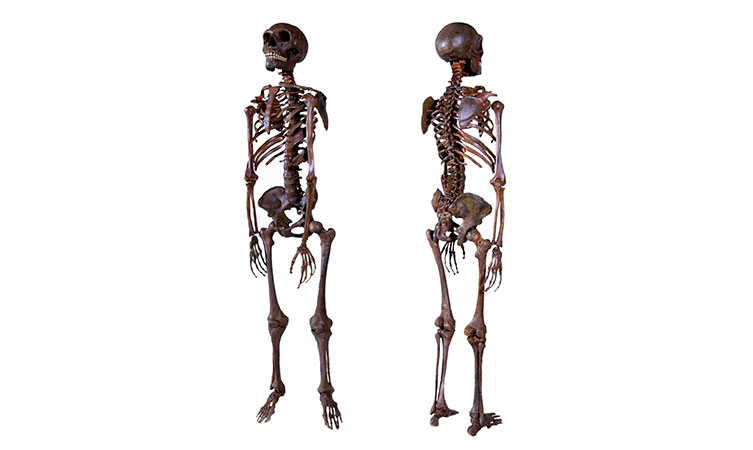
Model of a Homo neanderthalensis skeleton (front and back views). Neanderthals had stocky physiques with short lower legs and lower arms.
Their short, stocky physiques were suited to cold environments. The bulky trunk, in addition to their short lower leg and lower arm bones, gave Neanderthals proportions that would have minimised the skin's surface area, presumably to conserve heat under the predominantly colder conditions of the last 200,000 years.
Some researchers argue that this physique also gave the Neanderthals greater power in their arms and legs for close-range ambushes during hunting.
Neanderthal intelligence and behaviour
Despite their reputation as being primitive 'cavemen', Neanderthals were actually very intelligent and accomplished humans. These were no 'ape-men'. So it's unfair to them that the word Neanderthal is used as an insult today.
The brain size of late Neanderthals ranged from at least 1,200cm3 to 1,750cm3. This is larger than the modern average, but in proportion to their body size. Homo sapiens skulls from around 30,000 years ago also had larger brains on average than people today.
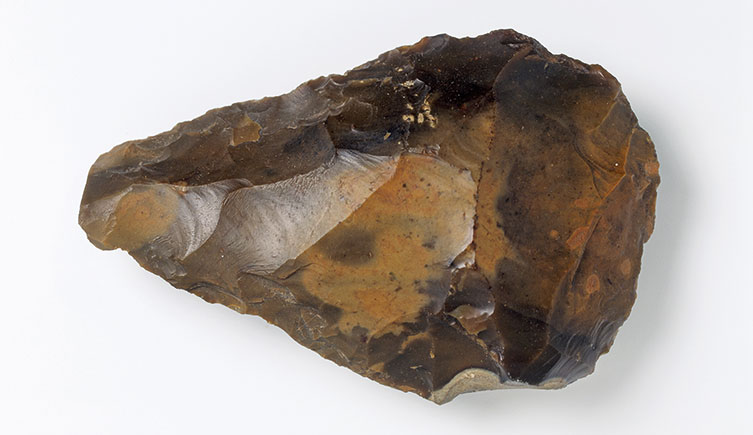
One of thousands of Neanderthal handaxes found in ancient river sediments at Swanscombe in Kent.
Neanderthals were skilled tool makers, as evidenced by excavated objects such as spears and flint handaxes.
Around 300,000 years ago Neanderthals developed an innovative stone technology known as the Levallois technique. This involved making pre-shaped stone cores that could be finessed into a finished tool at a later time. It meant Neanderthals were free to travel away from sources of raw material and yet be able to make tools when needed.
Modern-day demonstration of making a Levallois core and flake.
We know from injuries found on their prey - such as mammoths, bison and reindeer - that Neanderthals were proficient hunters, intelligent and able to communicate.
Healed and unhealed bone damage found on Neanderthals themselves suggest they killed large animals at close range - a risky strategy that would have required considerable skill, strength and bravery.
Watch a video about how Neanderthals hunted mammoths in Jersey about 180,000 years ago:
Neanderthals also developed the ability to make fire from at least 200,000 years ago. They needed it to live in their very challenging environments.
Life was hard, but these people were very resourceful.
Neanderthals vs Homo sapiens
Because many Neanderthal fossils and artefacts have been found in caves, the species became synonymous with the idea of cavemen. But many early modern humans also lived in caves - some of the most famous examples being the original Cro-Magnon Man, found in France, and Cheddar Man, who was found in Gough's Cave and lived in Somerset around 10,000 years ago.
Archaeological evidence shows that some Neanderthals looked after their sick and buried their dead, which suggests they were social and even compassionate beings.
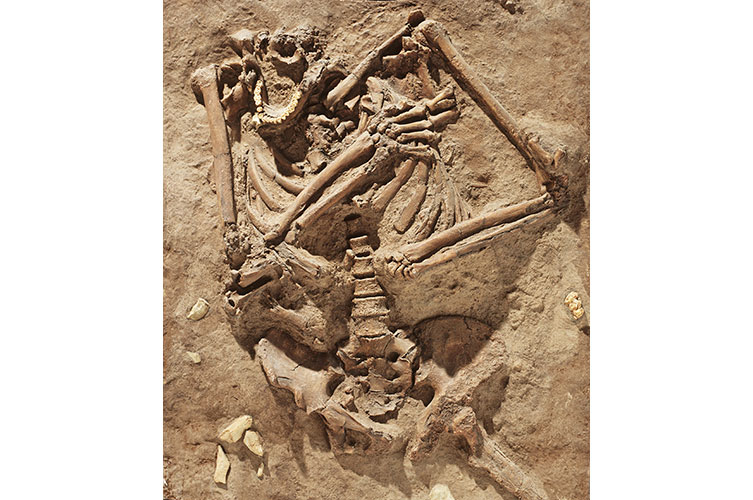
Cast of a Neanderthal burial in Kebara Cave, Israel, from around 60,000 years ago. The position of the upper limbs suggests the body was deposited in the grave before rigor mortis set in. The head is absent. Some scientists believe it was removed after burial, but we don't know why.
Where did our species, Homo sapiens, evolve?
Did Neanderthals make art?
Prof Stringer says, 'So far, in my opinion, we don't have representational art from Neanderthal sites. But they did exhibit a degree of symbolism - they made jewellery.'
Some of this jewellery was apparently fashioned from eagle talons. The oldest examples are about 130,000 years old. Pierced animal teeth and worked ivory have been found at Neanderthal sites such as the Grotte du Renne cave in France.
Neanderthals probably also used pigment to decorate or camouflage their bodies.
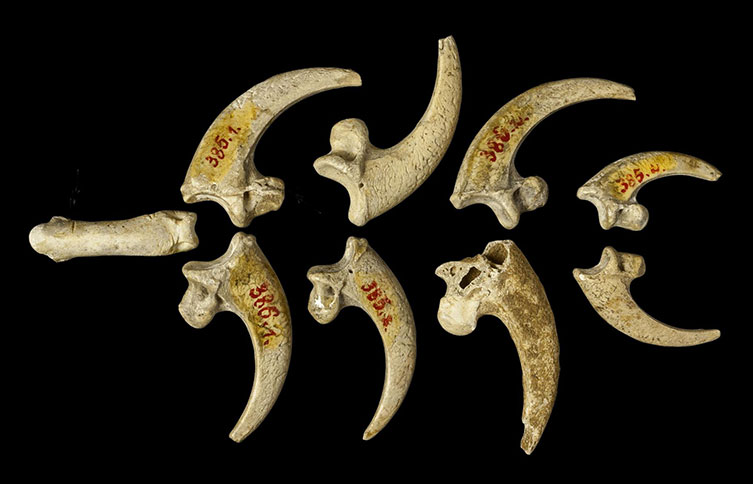
Modifications on these 130,000-year-old white-tailed eagle talons from the Krapina Neanderthal site in Croatia suggest they may have been part of jewellery such as a necklace or bracelet. Image © Luka Mjeda, Zagreb via EurekAlert
A study published in Science in 2018 found evidence that some Palaeolithic artwork in Spain was made by Neanderthals, as they dated to a time long before modern humans were in the region. Created using red pigment, the Spanish cave paintings included hand stencils and geometric shapes.
'Some previous claims for Neanderthal symbolic behaviour have dating uncertainties or lie within inferred overlaps between Neanderthals and Homo sapiens 40-60,000 years ago,' explains Prof Stringer, 'meaning that they could still be attributed to modern humans, or to the influence of modern humans on Neanderthal behaviour.'
The Spanish cave art indicates that Neanderthals were in fact capable of symbolic or artistic expression.
Prof Stringer adds, 'They further narrow any perceived behavioural gap between the Neanderthals and us.'
However, there are still no clear examples of Neanderthals creating representational art copied from real sources such as animals or people.
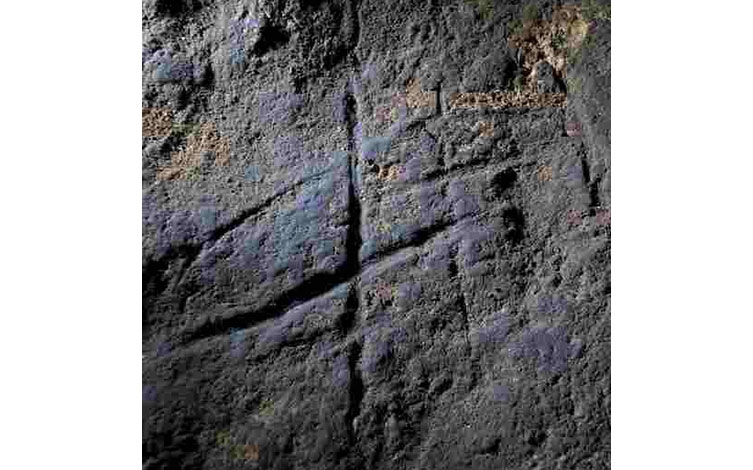
This engraving in Gorham's Cave, Gibraltar may have been made by Neanderthals. Image © AquilaGib (Stewart Finlayson, Gibraltar Museum) via Wikimedia Commons, licenced under CC BY-SA 4.0
What did Neanderthals eat?
The typical image of Neanderthals is of highly carnivorous, ice-age hunters and scavengers who ate large mammals.
However, food remains preserved in the calculus (hardened tartar) around their teeth show that the Neanderthal diet also included various plants, either collected directly or from eating the stomach contents of their plant-eating prey. Neanderthals also ate fungi.
In Gibraltar, they consumed mussels, young seals and perhaps also dolphin, though that meat may have been sourced from scavenged carcasses.

Part of a seal jaw found in Vanguard cave in Gibraltar. Researchers found evidence - such as cutmarks from tools - that Neanderthals processed marine animals for food.
Although Neanderthals were able to use fire, whether they regularly cooked their food is unclear.
Could Neanderthals speak?
It's very difficult to determine whether Neanderthals had spoken language as the tissue associated with the voice box doesn't preserve. However, they did have a similar vocal anatomy and their ear bones suggest they had a similar range of hearing to us.
The complexity of their social lives also suggests they must have been able to talk to each other, although their language may have been simpler than ours.
Why did Neanderthals go extinct?
The most recent fossil and archaeological evidence of Neanderthals is from about 40,000 years ago in Europe. After that point they appear to have gone physically extinct, although part of them lives on in the DNA of humans alive today.
The extinction of Homo neanderthalensis is a well-known fact, but why did this species disappear after having survived for more than 350,000 years?
We don't yet know. One view is that we are the reason. Early modern humans started to arrive in Europe more than 40,000 years ago. Perhaps Neanderthals were unable to cope with competition for resources from incoming groups of Homo sapiens.
Ancient DNA began to be recovered from Neanderthal fossils in 1997, and this has led on to the reconstruction of several complete genomes. These indicate that Neanderthals ranging from Spain to Siberia were relatively low in numbers and diversity during their last 20,000 years.
The genome of one female individual from the Altai Mountains also shows signs of long-term inbreeding in her population, a further indication of low numbers and isolation.
It seems that regular and sometimes extreme climatic fluctuations continually fragmented Neanderthal groups during the last 100,000 years, preventing them from building up large populations and continuous distributions across their range.
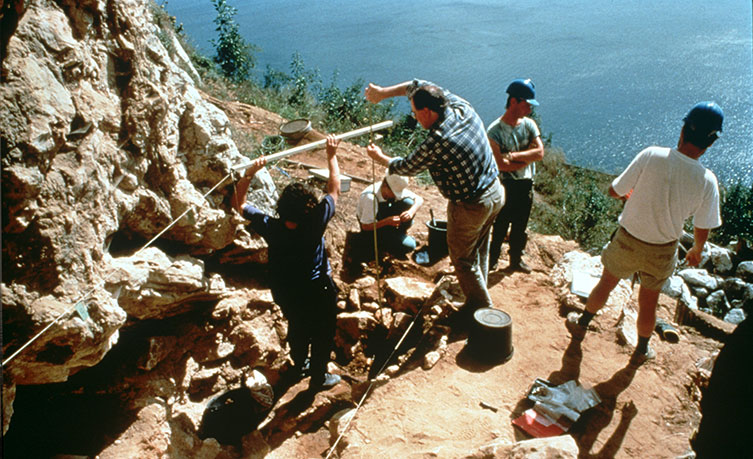
Palaeoanthropologists - including Prof Chris Stringer (right) - search for evidence of Neanderthals at an excavation in Gibraltar.
Neanderthals did not all become extinct at the same time. Their disappearance may have been staggered, suggesting that they were replaced by early modern humans as a result of local population extinctions, rather than being quickly overrun.
Rapid and dramatic climate change may have been another major factor that contributed to Neanderthals' extinction.
When severe changes in temperature happened rapidly, the plants and animals Neanderthals relied on were also affected. Faced with such conditions, only the most resourceful and adaptable could survive.
When were Neanderthals discovered?
Although the first Neanderthal remains were found at sites in Belgium and Gibraltar in 1830 and 1848 respectively, they weren't recognised as such until decades later.
It was the partial skeleton of a male Neanderthal unearthed during quarrying operations in the Neander Valley in Germany in 1856 that was first recognised as a distinct form of human.
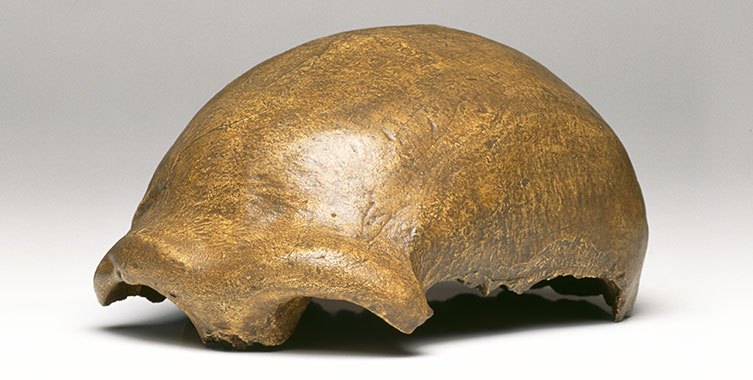
Cast of the cranium of Neanderthal 1, the first fossil recognised as Neanderthal.
It was named as a new human species, Homo neanderthalensis, eight years later in 1864. It was the first ancient human species ever identified and is now known as Neanderthal 1 or Feldhofer 1, after the original name of the cave where it was found.
Other important Neanderthal fossils
- Gibraltar 1 skull
This skull belonged to a Neanderthal female and was found at Forbes' Quarry in Gibraltar in 1848. It is the first adult Neanderthal skull ever found, although it wasn't recognised as such until it was re-examined after the identification of the Neander Valley skeleton.
- Sima de los Huesos human remains
Since 1976 over 6,500 human fossils, representing about 28 individuals, have been recovered in the Sima de los Huesos ('Pit of the Bones') in Atapuerca in northern Spain. The human remains consist of jumbled partial or nearly complete skeletons, mainly those of adolescents and young adults.
The Sima skeletons were previously claimed to represent Homo heidelbergensis and be about 600,000 years old. However, they are now dated to about 430,000 years ago.
Current evidence suggests they were very early Neanderthals - they show clear affinities to subsequent Neanderthals in details of the skull, face, jaws and especially their teeth. Ancient DNA from the remains also places them firmly on the Neanderthal genetic lineage, in line with their morphology.
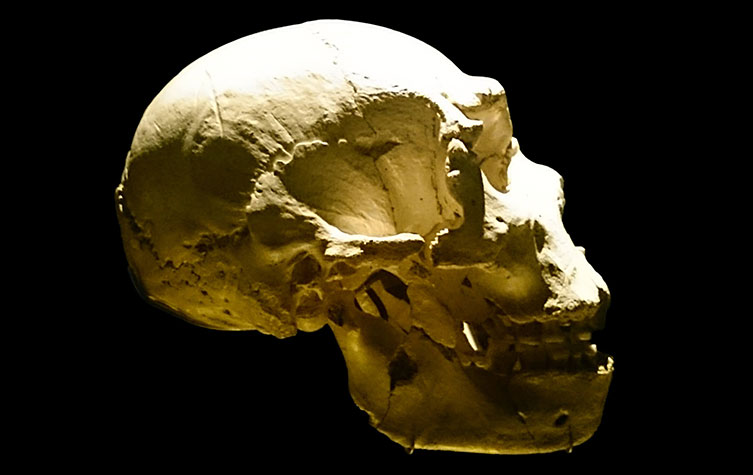
One of the Sima de los Huesos skulls. Image © UtaUtaNapishtim via Wikimedia Commons, licensed under CC BY-SA 4.0
- Swanscombe skull
This fossil from the Thames valley in England is in fact the back half of a braincase. It dates from a warm interglacial period about 400,000 years ago. It is generally regarded as belonging to an early Neanderthal woman. Her brain left its mark on the surrounding bone. Faint impressions of folds and blood vessels show it was the same size as human brains today, but shaped slightly differently.
The back of the skull includes a characteristic Neanderthal feature: a small pit marking the edge of where the neck muscles attached to the skull, called the suprainiac fossa.
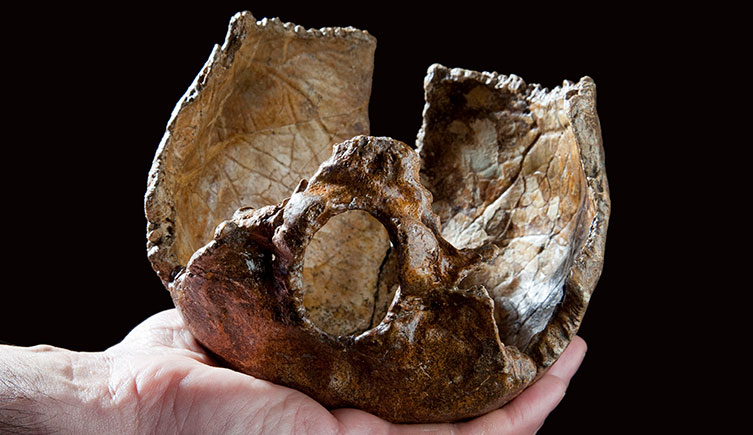
The 400,000-year-old partial skull from Swanscombe in Kent, thought to belong to an early Neanderthal woman.
- Devil's Tower Neanderthal fossils
Five skull fragments belonging to a young Neanderthal child were unearthed at the Devil's Tower site in Gibraltar in 1926. The child was probably nearly five years old when it died.
- The Steinheim cranium
Like the Sima de los Huesos skulls, the Steinheim cranium found in Germany in 1933 and estimated to be 250,000-350,000 years old is currently considered to belong to an early Neanderthal. Its overall shape is comparable to the Sima and Swanscombe skulls and, like them, it possesses the suprainiac fossa.
This article includes information from Our Human Story by Dr Louise Humphrey and Prof Chris Stringer.

Explore human evolution
Our scientists and the collections we care for are helping to answer where, when and how humans evolved.
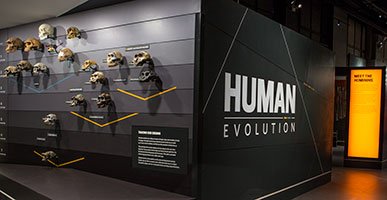
Meet your ancient relatives
Embark on a seven-million-year journey of evolution and see fossil and artefact discoveries.
How did mammals outlast the dinosaurs?
Explore their evolutionary triumph in our expert-led, online and on-demand course. Discover their journey from survival to dominance!

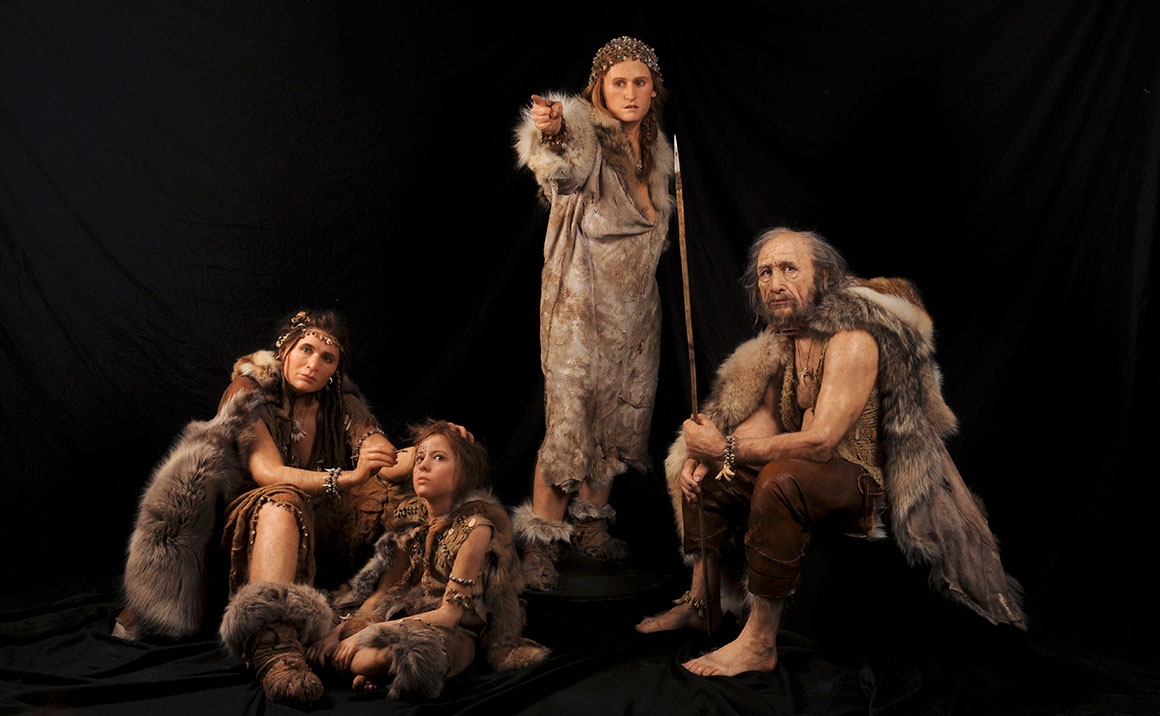
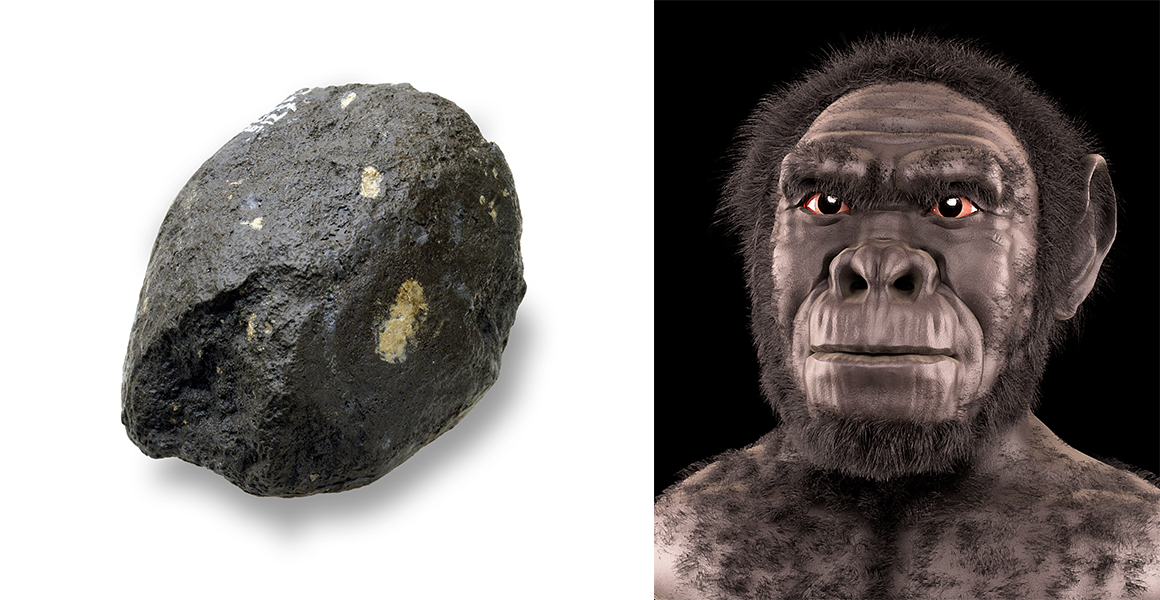
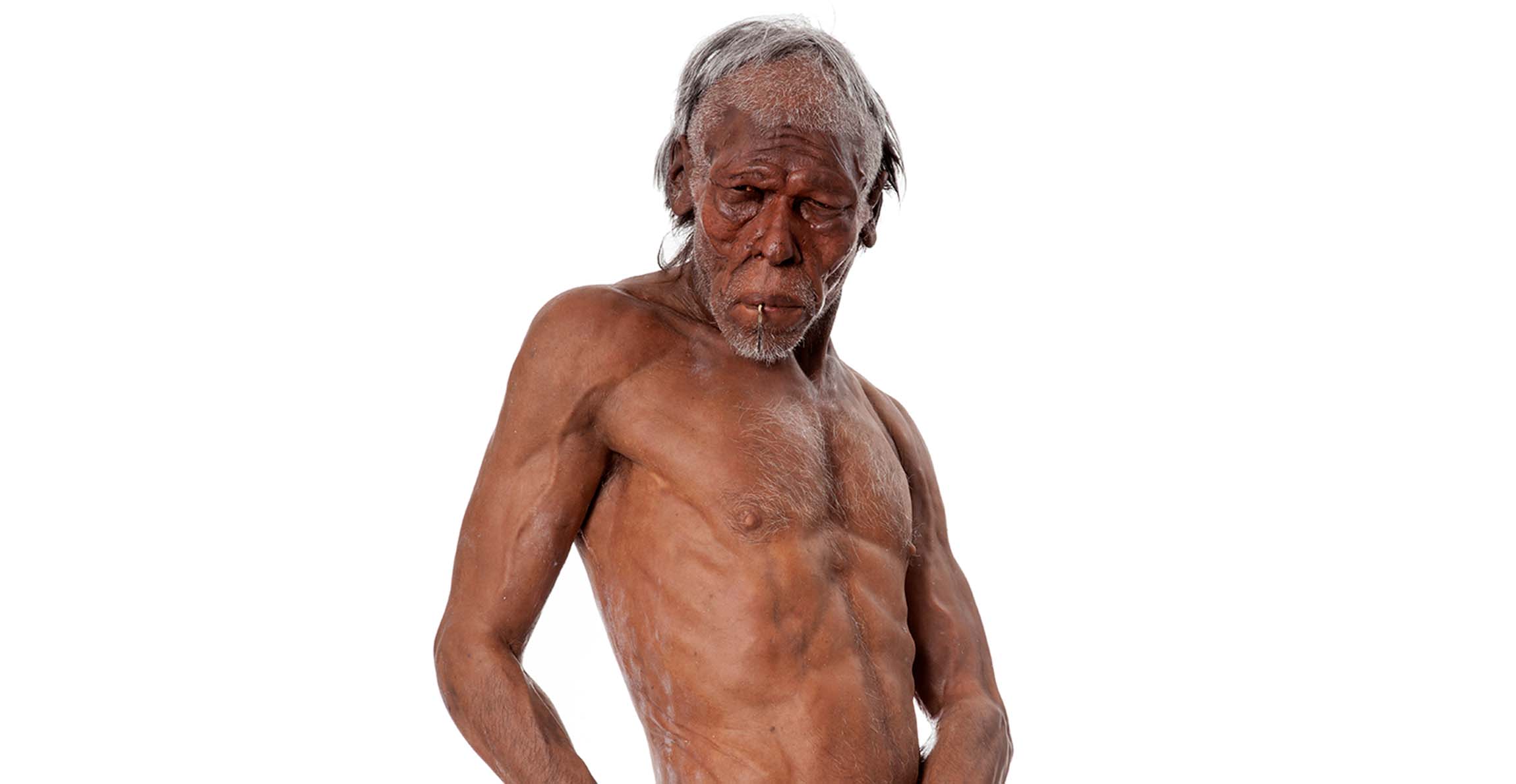
Don't miss a thing
Receive email updates about our news, science, exhibitions, events, products, services and fundraising activities. We may occasionally include third-party content from our corporate partners and other museums. We will not share your personal details with these third parties. You must be over the age of 13. Privacy notice.
Follow us on social media